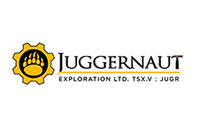
Mesothermal veins are known for their large size and continuation to depth, and therefore, are a major source of the world’s gold production.
By Leia Michele Toovey
A large portion of the world’s economic deposits of gold, silver, copper and lead–zinc are found in vein (lode) deposits. When veins occur in groupings—various discrete veins with similar characteristics clustered in the same area—the deposit is referred to as a vein system. Vein systems can hold impressive amounts of valuable minerals.
Most often, vein hosted gold is invisible to the unaided eye as it is found in conjunction with a fair bit of gangue material including quartz, sulfide minerals, calcite and various clay minerals. Veins range in thickness from a few centimeters to four meters; they can be several hundreds of meters long and extend to depths in excess of 1,500 meters. Mineralization commonly occurs in shoots within the vein structures.
Grades of gold historically have been in the 13.7 to 17.1 g/t range with cut-off around 8.6 grams per tonne. However, as the price of gold has risen over the past 15 years and mining technology has improved, deposits with larger tonnages and lower grades can be mined economically. Both underground and open-pit mining methods are used to extract minerals with the latter used in near-surface vein deposits.
In the case of mesothermal vein deposits, which generally occur at greater depths, underground mining is the preferred extraction method.
Formation
Vein deposits are formed from hydrothermal fluids rising through the earth’s crust towards the earth’s surface. These hydrothermal fluids, most commonly created by the movement of magma through the earth’s crust, travel the path of least resistance through fractures and faults in the country rock. As these minerals travel, changes in temperature and pressure as well as chemical reactions resulting from contact with various minerals in the country rock can lead to the precipitation and deposition of ore minerals. There are two basic types of vein deposits: epithermal and mesothermal.
Mesothermal veins are formed at moderate temperature and pressure, in and along fissures or fractures in rocks. Mesothermal veins are known for their large size and continuation to depth, and therefore, are a major source of the world’s gold production. Veins are usually less than two meters wide and often occur in parallel sets. Typical mineralization includes the sulfides chalcopyrite, sphalerite, galena, tetrahedrite, bornite and chalcocite. Gangue includes quartz, carbonates and pyrite. Classic mesothermal vein deposits include: the Motherlode District, California; Coeur d’Alene District, Idaho; Cassiar District, BC Archean lode gold deposits are found in Ontario, Quebec and Manitoba, and the Golden Mile Kalgoorile in Australia.
The Super Pit in Kalgoorile
The Super Pit, found in Kalgoorlie, Western Australia, produces up to 850,000 ounces of gold every year, making it the largest mining center and the biggest open pit mine in Australia. The Super Pit is managed by Kalgoorlie Consolidated Gold Mines and owned 50/50 by Newmont Mining (NYSE:NEM) and Barrick Gold Corporation (NYSE:ABX).
Most of the gold mined in the Super Pit occurs within ore lodes formed by ancient shears in a rock unit called the Golden Mile Dolerite. There are over 2,000 ore lodes that occur within the Golden Mile dolerite. The ore lodes vary in size from centimeters up to several hundred meters in length and depth. The Kalgoorlie Gold Field is developed within the Achaean Norseman-Wiluna greenstone belt of the Yilgarn Craton.
The Fimiston open pit is currently 3.5 kilometers long, 1.5 kilometers wide and over 600 meters deep. Over 30 years, the mine has produced more than 50 million ounces of gold. Kalgoorlie’s mine life is expected to end in 2019.
Don’t forget to follow us @INN_Resource for real-time news updates!
This article was first published on Gold Investing News on April 26, 2011.





